Archived from 2008
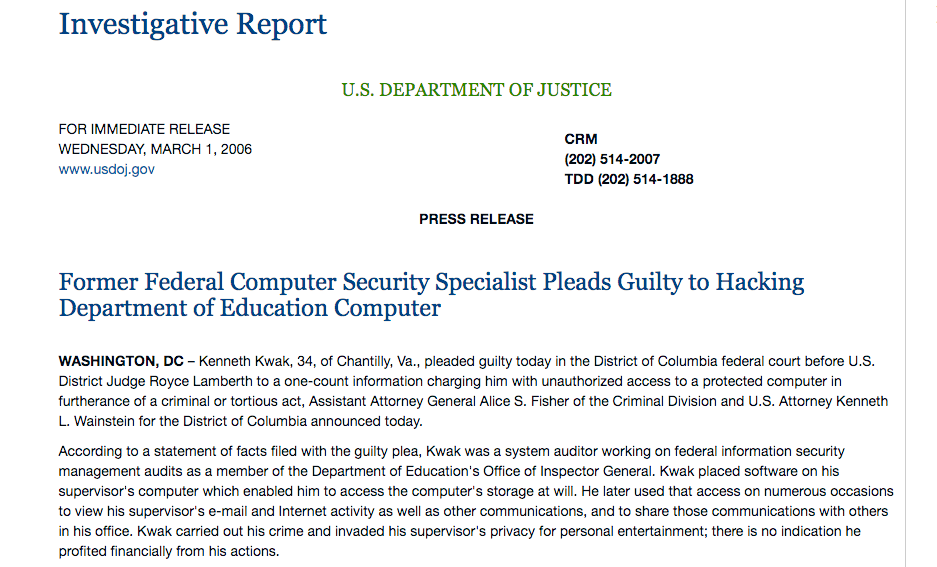
WASHINGTON, DC – Kenneth Kwak, 34, of Chantilly, Va., pleaded guilty today in the District of Columbia federal court before U.S. District Judge Royce Lamberth to a one-count information charging him with unauthorized access to a protected computer in furtherance of a criminal or tortious act, Assistant Attorney General Alice S. Fisher of the Criminal Division and U.S. Attorney Kenneth L. Wainstein for the District of Columbia announced today.
According to a statement of facts filed with the guilty plea, Kwak was a system auditor working on federal information security management audits as a member of the Department of Education's Office of Inspector General.
*Kwak placed software on his supervisor's computer which enabled him to access the computer's storage at will.
He later used that access on numerous occasions to view his supervisor's e-mail and Internet activity as well as other communications, and to share those communications with others in his office.
Kwak carried out his crime and invaded his supervisor's privacy for personal entertainment; there is no indication he profited financially from his actions.
"This case is an example of our zero-tolerance approach to public corruption and computer hacking, and highlights the excellent working relationship between our office and the Computer Crime and Intellectual Property Section of the Criminal Division," said U.S. Attorney Wainstein.
Kwak faces a maximum penalty of five years in prison and a fine of $250,000 for the crimes to which he pleaded guilty. A sentencing date has been set for May 12, 2006.
The matter was investigated by the Computer Crime Investigations Division of the Department of Education's Inspector General’s Office. The case was prosecuted by Senior Counsel William Yurek (cross-designated as a Special Assistant U.S. Attorney in the D.C. U.S. Attorney’s Office), along with assistance by Trial Attorney Howard Cox, both of the Computer Crime and Intellectual Property Section in the DOJ Criminal Division. The prosecution was part of the "zero-tolerance policy" recently adopted by the U.S. Attorney’s office regarding intrusions into U.S. government computer systems.
06-106
To explain this, we need to go back in time,
In an article from the Daily Caller titled,
HILLARY CLINTON WAS A CORPORATE LAWYER, NOT A CHILDREN’S ADVOCATE
In an article from the Daily Caller titled,
HILLARY CLINTON WAS A CORPORATE LAWYER, NOT A CHILDREN’S ADVOCATE
You find evidence of what Hillary was Really up to.
https://dailycaller.com/2016/07/28/hillary-clinton-was-a-corporate-lawyer-not-a-childrens-advocate/
In Liberty Unyielding you will find,
A really big clue: The close Clinton connection of Fusion GPS founder Glenn Simpson
Mary Jacoby worked as a file clerk in Hillary Clinton's Rose Law Firm.
So this is interesting. Mary Jacoby, former Wall Street Journal reporter and the wife of Glenn Simpson – founder of Fusion GPS – has been in the news today after a new article by Lee Smith was published in The Tablet.
Mary Jacoby wrote at length in June, on Facebook, about husband Glenn’s decisive role in the infamous “dossier” on Trump:
A Mapping out of the Russian Investigation based on a Faked Dossier. The history behind, who laid the groundwork and All the connected Co-Conspirators!
Found on Wikipedia
Mary Jacoby is the daughter of Jon Jacoby, who introduced Walter Smiley to the Stephens family of Arkansas.
Smiley is the founder of Systematics which the Stephens family purchased an 80% stake.
Hillary Rodham Clinton was the intellectual property lawyer for Systematics. Part of this "intellectual property" involved a banking transaction software system based on the PROMIS software.
A federal bankruptcy court ruled in 1987 that the US Justice Department "stole" the PROMIS software from a small company called Inslaw Inc when the DOJ refused to pay Inslaw for the software program and forced Inslaw into bankruptcy.
The US intelligence community took the PROMIS software and added a hidden "backdoor" for monitoring banking transactions and money laundering.
Systematics was the firm that the National Security Agency (NSA) used to get the PROMIS software with the hidden backdoor into the hands of banks worldwide.
The intellectual property that Hillary Clinton handled, and that Systematics marketed, was stolen from Inslaw.
Let's start with Systematics inc.
a data processing company acquired in 1968 by Arkansas superinvestor Jackson T. Stephens. In 1990 it was sold to Alltel Corporation, and today is a part of Fidelity Information Systems.
Fidelity Information Systems still uses the name 'Systematics' as the name of a retail banking software product suite.
Through Jon Jacoby, Smiley was introduced to the Stephens family, who agreed to invest $400,000 in Walter and Systematics in return for 80% equity stake.
Walter quietly expanded his business over the next 12 years, eventually finding a way to license its software to banks, and ultimately going public. In 1990 it was sold to Alltel Corporation. The name was changed to Alltel Information Services (AIS) in 1994.
In 2003, Alltel sold the Information Services subsidiary to Fidelity National Financial.
One of the lawyers Stephens hired to represent the company was Hillary Rodham. After she joined the Rose Law Firm, Stephens employed the firm and engaged its partners — including the now-married Hillary Rodham Clinton, Vince Foster and Webster Hubbell — in several of his ventures.
Here is some of the Stephen's family background,

In 1933, Witt Stephens founded W.R. Stephens Investments to trade Arkansas Highway bonds, which at the time were selling for as low as pennies on the dollar.
upon graduation from the U.S. Naval Academy, Jackson T. "Jack" Stephens joined his brother and with a handshake
The two brothers quickly began a series of acquisitions that would become a catalyst for the firm's growth and future.
945, Stephens purchased Arkansas Oklahoma Gas Company in Fort Smith, Arkansas
1953, acquired what is now Stephens Production, an independent oil and gas exploration company
1954, they purchased a controlling interest in the Arkansas Louisiana Gas Company.[
1948, Stephens sold Sheridan Telephone Exchange to Allied Telephone Company, which later became Alltel Corporation, thus beginning a decades-long relationship that in part continues today
Witt left the firm to become president and chairman of Arkansas Louisiana Gas Company, while both retained their 50-50 share of Stephens Inc. Witt returned to Stephens in the early 1970s.
Jack began to grow Stephens by providing private equity to many young growing companies, much in the way of the British Merchant Bank investing model, predating by decades the private equity endeavors of Wall Street firms.
Several generations of companies and business leaders came to know Jack as not only a smart investment banker, but as a loyal and reliable friend as well. Jack's influence grew well beyond Arkansas to the boardrooms of corporate America and to the halls of Washington D.C.; his opinions were constantly sought by investors, CEOs and politicians.
In the late 1960s, anticipating the coming revolution in bank data processing, Jack Stephens deployed excess computing capacity at Union Life Insurance Company, which was owned by him and his family
** With $400,000 in start-up capital invested, he created Systematics, which would later become a leader in the bank data processing industry
** Systematics was eventually acquired by Alltel Corporation and became Alltel Information Services.
** AIS was later acquired by Fidelity National Information Systems.
** In 1970, Stephens Inc., along with White Weld & Co., raised $4.95 million in an IPO for a small Arkansas-based discount retailer, Wal-Mart Stores, Inc., owned by Sam Walton and his family
See information on Hillary being appointed to their board here.
As a Director, Clinton Moved Wal-Mart Board, but Only So Far
Even though they try to further their agenda and distract, point being she was connected to both the Stephen's family and Walmart as was the Stephen's family.
https://www.nytimes.com/2007/05/20/us/politics/20walmart.html
** Hillary Rodham Clinton was the intellectual property lawyer for Systematics. Part of this "intellectual property" involved a banking transaction software system based on the PROMIS software.
** A federal bankruptcy court ruled in 1987 that the US Justice Department "stole" the PROMIS software from a small company called Inslaw Inc when the DOJ refused to pay Inslaw for the software program and forced Inslaw into bankruptcy.
** an acronym for Prosecutors' Management Information System, for use in law enforcement record keeping and case-monitoring activities.
** The US intelligence community took the PROMIS software and added a hidden "backdoor" for monitoring banking transactions and money laundering.
** Systematics was the firm that the National Security Agency (NSA) used to get the PROMIS software with the hidden backdoor into the hands of banks worldwide.
** The intellectual property that Hillary Clinton handled, and that Systematics marketed, was stolen from Inslaw.
Let's take a look at Inslaw,
Inslaw is known for developing Promis, an early case management software system.
It is also known for a lawsuit that it brought against the United States Department of Justice in 1986 over Promis.
Inslaw won damages in bankruptcy court, but these were overturned on appeal.
Operating under the acronym PROMIS Prosecutors' Management Information System
Inslaw's claims were finally referred by Congress to the Court of Federal Claims in 1995, and the dispute ended with the Court's ruling against Inslaw in 1998.
During the 12-year long legal proceedings, Inslaw accused the Department of Justice of conspiring to steal its software, attempting to drive it into Chapter 7 liquidation, using the stolen software for covert intelligence operations against foreign governments, and involvement in a murder. These accusations were eventually rejected by the special counsel and the Court of Federal Claims.
The suit resulted in several Justice Department internal reviews, two Congressional investigations, the appointment of a special counsel by Attorney General William P. Barr, and a lengthy review of the special counsel's report under Attorney General Janet Reno.
Inslaw's claims were finally referred by Congress to the Court of Federal Claims in 1995, and the dispute ended with the Court's ruling against Inslaw in 1998.
Very interesting!
As reported by the Baltimore Post Examiner,
Janet Reno, first woman Attorney General has passed away
https://baltimorepostexaminer.com/janet-reno-first-woman-attorney-general-passed-away/2016/11/07
She passed away 11.7.2021
The following Department of Justice actions occurred during Reno's tenure:
No. 51 is 17(3 times)
The 51-day Waco siege standoff and resulting 76 deaths—the Branch Davidians—in Waco, Texas. (The standoff began on February 28, 1993, twelve days before Reno was installed as Attorney-General.)
Reno in congressional testimony stated that she authorized the FBI assault on the Branch Davidians because of reports that militia groups were en route to Waco during the standoff "either to help [Branch Davidian leader David] Koresh or to attack him."
The FBI had also, erroneously reported to Reno that children were being abused at the compound.
Reno publicly expressed her regret of the decision to storm the compound, and accepted full responsibility for the loss of life.
Declining to question anyone in the Wenatchee child abuse prosecutions, with Reno concluding there was no "evidence of prosecutable violations of federal civil rights law."
Prosecution resulting in the conviction of 21 of the Montana Freemen, a group that did not believe there should be government above the county level, after an 81-day armed standoff which ended without loss of life.
Leak to the news media regarding Richard Jewell that led to the widespread and incorrect presumption of his guilt in the Centennial Olympic Park bombing. She later apologized, saying "I'm very sorry it happened. I think we owe him an apology. I regret the leak.
In 1994, Reno appointed Robert Fiske special counsel to investigate Bill Clinton 's involvement in Whitewater, a controversy stemming from Clinton's business dealings during his time as Governor of Arkansas. Fiske wrapped up his criminal investigation within six months, and found no link between Whitewater and the suicide of former Deputy White House Counsel Vince Foster.
Congress reauthorized the investigation and in August 1994, a panel of judges from the U.S. Court of Appeals overseeing the special counsel refused to reappoint Fiske. The panel considered it a conflict of interest for Fiske to investigate Clinton because Reno, a member of the Clinton Administration, appointed Fiske.
From ABC News
A look inside the Walmart turned immigration detention center for children
Journalists were given a tour of a facility for undocumented children.
WHY did this happen concerning Inslaw?
Who developed Inslaw and What does PROMIS stand for?
Inslaw began as a non-profit organization called the Institute for Law and Social Research.
The Institute was founded in 1973 by William A. Hamilton to develop case management software for law enforcement office automation.
Funded by grants and contracts from the Law Enforcement Assistance Administration (LEAA), the Institute developed a program it called "Promis", an acronym for Prosecutors' Management Information System, for use in law enforcement record keeping and case-monitoring activities.
When Congress voted to abolish the LEAA in 1980, Hamilton decided to continue operating as a for-profit corporation and market the software to current and new users. In January 1981 Hamilton established the for-profit Inslaw, transferring the Institute's assets over to the new corporation.
Promis software was originally written in COBOL for use on mainframe computers; later a version was developed to run on 16 bit mini-computers such as the DEC PDP-11.
Primary use of PROMIS was for D.C.
The primary users of this early version of the software were the United States Attorneys Office of the District of Columbia, and state and local law enforcement.
Both the mainframe and 16 bit mini-computer versions of Promis were developed under LEAA contracts, and in later litigation, both Inslaw and DOJ eventually agreed that the early version of Promis was in the public domain, meaning that neither the Institute nor its successor had exclusive rights to it.
I wonder who helped establish the legalise for THAT agreement?
In 1979, the DOJ contracted with the Institute to do a pilot project that installed versions of Promis in four US Attorneys offices; two using the mini-computer version, and the other two a "word-processor" version which the Institute was developing
the Department decided in 1981 to go ahead with a full implementation of locally based Promis systems, and issued a request for proposals (RFP) to install the mini-computer version of Promis in the 20 largest United States Attorneys offices.
This contract, usually called the "implementation contract" in later litigation, also included developing and installing "word-processor" versions of Promis at 74 smaller offices.
Inslaw became a For Profit Group and were awarded a large contract
The now for-profit Inslaw responded to the RFP, and in March 1982 was awarded the three year $10m contract by the contracting division, the Executive Office of United States Attorneys (EOUSA)
The contract did not go smoothly. Disputes between EOUSA and Inslaw began soon after its execution. A key dispute over proprietary rights had to be solved by a bi-lateral change to the original contract. This was called "Modification 12."
EOUSA also determined that Inslaw was in violation of the terms of an "advance payment" clause in the contract. This clause was important to Inslaw's financing and became the subject of months of negotiations. There were also disputes over service fees.
During the first year of the contract, the DOJ did not have the hardware to run Promis in any of the offices covered by the contract. As a stopgap measure, Inslaw provided Promis on a time-share basis through a Vax computer in Virginia, allowing the offices to access Promis on the Inslaw Vax through remote terminals, until the needed equipment was installed on-site.
EOUSA claimed that Inslaw had overcharged for this service and withheld payments.
The DOJ ultimately acquired Prime computers, and Inslaw began installing Promis on these in the second year of the contract, in August 1983.
The "word-processor" Promis installation, however, continued to have problems, and in February 1984 the DOJ cancelled this portion of the contract.
Following this cancellation, the financial condition of Inslaw worsened, and the company filed for Chapter 11 bankruptcy in February 1985.
the contract data rights clause "gave the government unlimited rights in any technical data and computer software delivered under the contract."
This presented a potential conflict with Inslaw's plans to market a commercial version of Promis which it called "Promis 82" or "Enhanced Promis."
Here is a look at what I have found connected to this,

If you're not familiar, this is a government program,
Head Start is a program of the United States Department of Health and Human Services that provides comprehensive early childhood education, health, nutrition, and parent involvement services to low-income children and their families.
https://promis.cleverex.com/MyHeadstart/SelectApp.aspx
Used for pupil records and management systems here,

https://www.mypromis.org/Home/Login
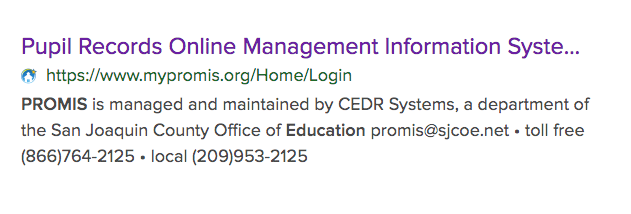
The Promis software also involved in health,
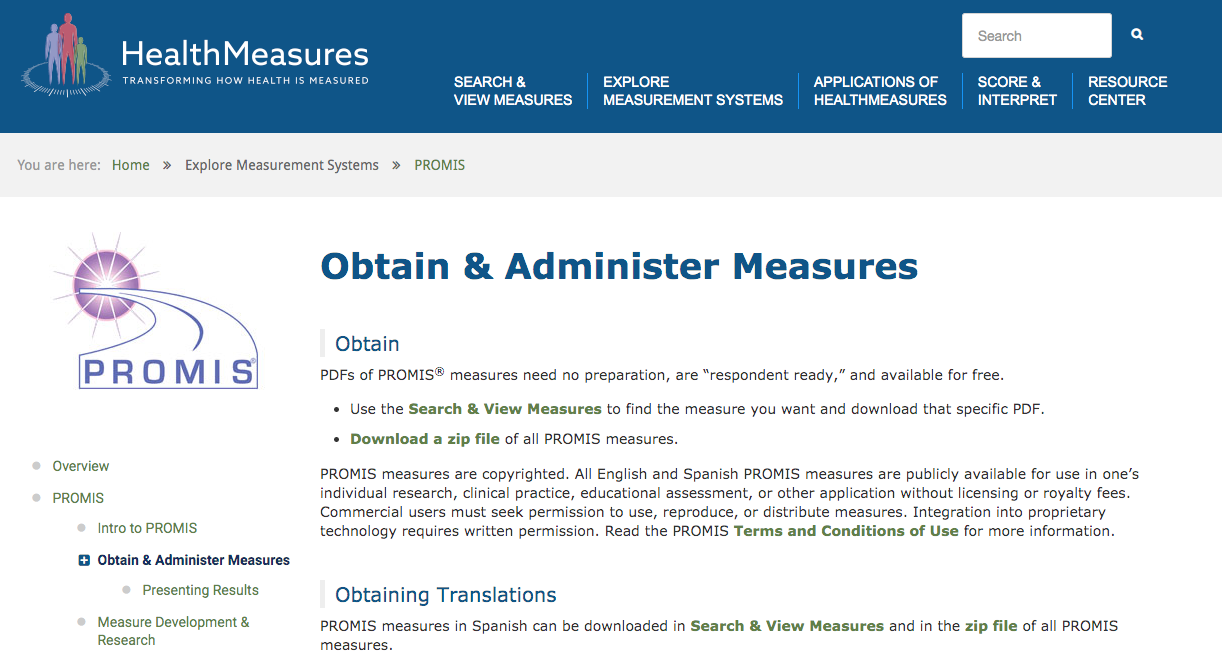
http://www.healthmeasures.net/explore-measurement-systems/promis/obtain-administer-measures
From Promis Software -
Bin Laden's Magic Carpet
An October 16 FOX News report by correspondent Carl Cameron indicating that convicted spy, former FBI Agent Robert Hanssen, had provided a highly secret computer software program called Promis to Russian organized crime figures - who in turn reportedly sold it to Osama bin Laden - may signal a potential intelligence disaster for the United States. Admissions by the FBI and Justice in the FOX story that they have discontinued use of the software are most certainly a legal disaster for a government that has been engaged in a 16-year battle with the software's creator, William Hamilton, CEO of the Inslaw Corporation. Over those 16 years, in response to lawsuits filed by Hamilton charging that the government had stolen the software from Inslaw, the FBI, the CIA and the Department of Justice have denied, in court and under oath, ever using the software.
Bin Laden's reported possession of Promis software was clearly reported in a June 15, 2001 story by Washington Times reporter Jerry Seper. That story went unnoticed by the major media. In it Seper wrote, "The software delivered to the Russian handlers and later sent to bin Laden, according to sources, is believed to be an upgraded version of a program known as Promis - developed in the 1980s by a Washington firm, Inslaw, Inc., to give attorneys the ability to keep tabs on their caseloads. It would give bin Laden the ability to monitor U.S. efforts to track him down, federal law-enforcement officials say. It also gives him access to databases on specific targets of his choosing and the ability to monitor electronic-banking transactions, easing money-laundering operations for himself or others, according to sources."
In a series of excellent stories by The Times, and as confirmed by parts of the FOX broadcast, it appears that Hanssen, who was arrested in February, in order to escape the death penalty this summer, agreed to provide the FBI and other intelligence agencies with a full accounting of his sale of Promis overseas. Reports state that almost until the moment of his capture, Hanssen was charged with "repairing" and upgrading versions of the software used by Britain and Germany.
On October 17, two different spokespersons at the FBI's Office of Public Affairs told FTW, "The FBI has discontinued use of the Promis software." The spokespersons declined to give their names.
On October 24, Department of Justice spokesperson Loren Pfeifle declined to answer any questions about where, when or how Promis had been used and would say only, "I can only confirm that the DoJ has discontinued use of the program."
Inslaw had two limited contracts to provide Promis to Justice in 1982 and 1983.
https://rense.com/general17/maf.htm
A software called Promise.e used for Electrical System Design

https://www.bentley.com/en/products/product-line/electrical-and-instrumentation-software/promise
According to an article from 1993 in Wired,
**THE INSLAW OCTOPUS
Software piracy, conspiracy, cover-up, stonewalling, covert action: Just another decade at the Department of Justice
The House Judiciary Committee lists these crimes as among the possible violations perpetrated by "high-level Justice officials and private individuals":
Conspiracy to commit an offense
Fraud
Wire fraud
Obstruction of proceedings before departments, agencies
and committees
Tampering with a witness
Retaliation against a witness
Perjury
Interference with commerce by threats or violence
Racketeer Influenced and Corrupt Organizations (RICO) violations
Transportation of stolen goods, securities, moneys
Receiving stolen goods
https://www.wired.com/1993/01/inslaw/
There is this,

https://www.promise.com/Support/downloadcenter
There is PROMAS property management software,


PROMIS® (Patient-Reported Outcomes Measurement Information System) is a set of person-centered measures that evaluates and monitors physical, mental, and social health in adults and children. It can be used with the general population and with individuals living with chronic conditions.
http://www.healthmeasures.net/explore-measurement-systems/promis
This is who the PROMIS software is associated with for Head Start,
For more than two decades, Cleverex has been providing innovative and affordable information systems products and services to government agencies and private industries. Cleverex is a leading technology provider of Business Process Management systems and Knowledge Management systems to Head Start programs and other non-profit, social services and education organizations.
Our core competencies consist of Knowledge Management (KM) and Business Process Management (BPM). Cleverex Business Process Management solutions are tailored to suit both competitive revenue-oriented industries as well as service-oriented industries like social services. Our Knowledge Management solutions include large Database Systems involving Government Documentation, Learning and Knowledge Dissemination systems, Knowledge-Asset Acquisition systems, and Online Collaborative systems. The applications of our BPM technologies include Case Management systems, Subject Guidance systems, Online Document Development and Peer Review systems, Federal Review systems, Grant Application and Management systems, and Quality Assurance processes.
They are Global,
We are proud to be the leading provider of case management and service delivery information systems to the nation's Head Start and Community Action programs. Today, more than a thousand organizations across the globe are enjoying our innovative information technology services and products.

Facebook link claims to be broken,

Here is their Linkden

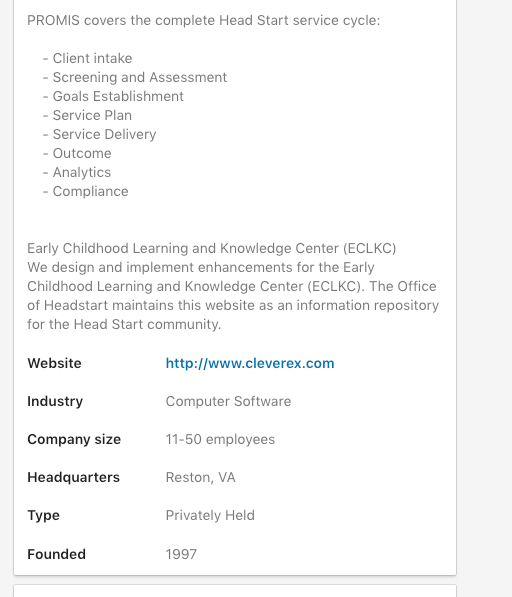
12 employees,
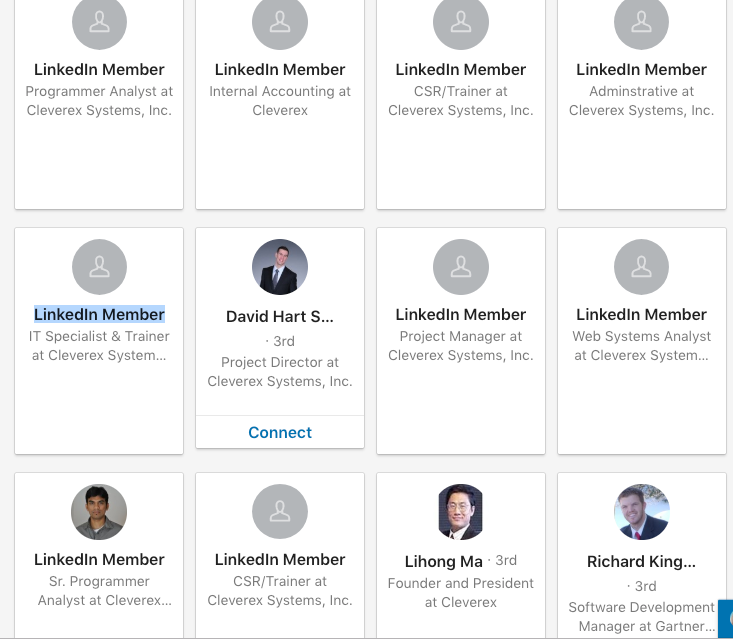
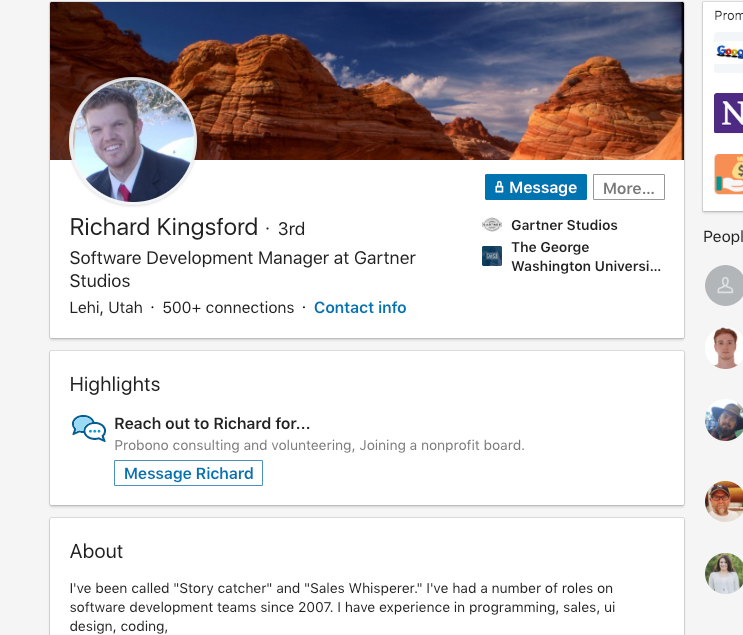

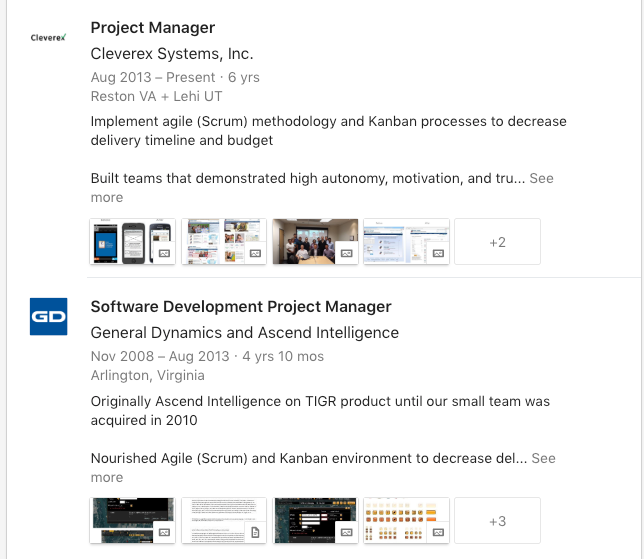
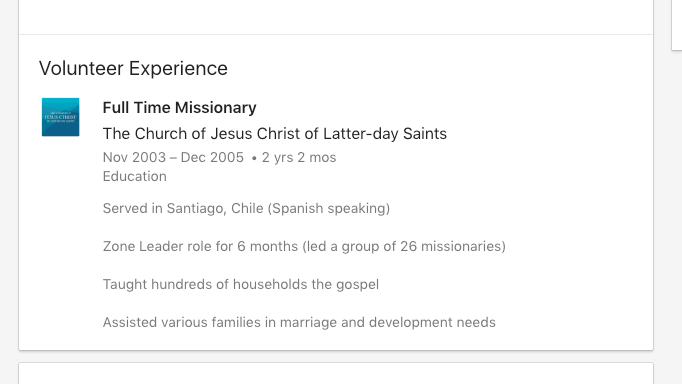
Jeff Flake also from LDS and did a missionary trip to South Africa,
See more here,
His interests,
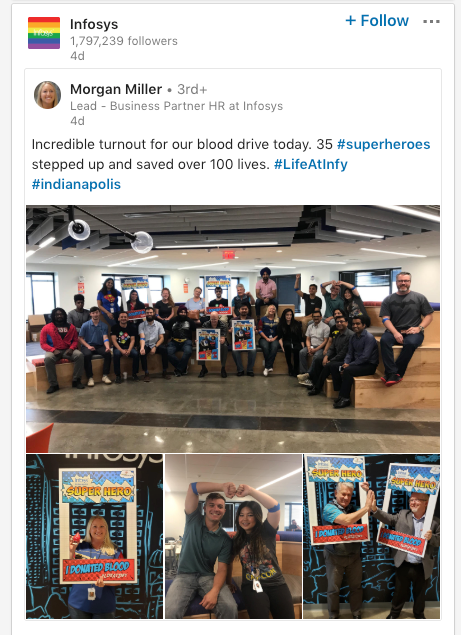
Back to Jacoby and Glen Simpson interesting history!
(Interestingly, I had found some of the same Simpson/Jacoby articles in recent weeks, and had related thoughts, although not identical ones, about the bearing this journalistic background and prior mindset would have had on Simpson as he was working the oppo research on Trump.)
what a payoff from doing a little spadework on Mary Jacoby. She and Glenn Simpson were married in 1994, and at the time, the Washington Post had a little blurb on that event (Jacoby was a reporter at Roll Call at the time):
- Roll Call newspaper will be dispatching a contingent of reporters down to Little Rock this weekend, but not to cover any congressional campaign. Seems that scribes Glenn Simpson and Mary Jacoby are getting hitched tomorrow in the Arkansas city.
Jon Jacoby, for his part, was 51 in 1990, and had joined Stephens in 1963, early enough to be a key player in major Stephens accomplishments like launching the Wal-Mart IPO (1970) and building Alltel out of a handful of successful Stephens companies. I promise, there’s a reason you want to know this.

Did a story on Clinton's connections to Walmart here, Free to read and No account required.
In 1986, Sam Walton, the founder of Wal-Mart, was under pressure to appoint a woman to the company’s 15-member -all male- board of directors. So, Mr. Walton asked a young lawyer, Hillary Rodham Clinton, who just happened to be married to the governor of Arkansas at the time, where Wal-Mart is based, to be the sole female member of the board.
During six years (1986 -1992) as a member of the Wal-Mart board of directors, Hillary Clinton remained silent as the world’s largest retailer waged a major campaign against the labor unions seeking to represent store workers. See source below.
Perhaps I will look at more of these people connected to Cleverex soon.
According to the Black Vault,
PROMIS is believed by some to be the forefunner to the now infamous “Prism” program by the National Security Agency (NSA). The “Prism” program was brought to light by leaker Edward Snowden, yet it is now coming to light, that a program has existed long before this new revelation. It was known as PROMIS.
We went through all of the history of Promis earlier,
Quick breakdown again for a refresher,
Hillary Clinton was a Corporate Lawyer and Not a children's advocate for Rose Law Firm
Hillary Rodham Clinton was the intellectual property lawyer for Systematics. Part of this "intellectual property" involved a banking transaction software system based on the **PROMIS software.
A federal bankruptcy court ruled in 1987 that the US Justice Department "stole" the PROMIS software from a small company called Inslaw Inc when the DOJ refused to pay Inslaw for the software program and forced Inslaw into bankruptcy.
The US intelligence community took the PROMIS software and added a hidden "backdoor" for monitoring banking transactions and money laundering.
Systematics was the firm that the National Security Agency (NSA) used to get the PROMIS software with the hidden backdoor into the hands of banks worldwide.
The intellectual property that Hillary Clinton handled, and that Systematics marketed, was stolen from Inslaw.
Owners/Starters of Inslaw William Anthony Hamilton and his wife, Nancy Burke Hamilton
History of William or Bill Hamilton,
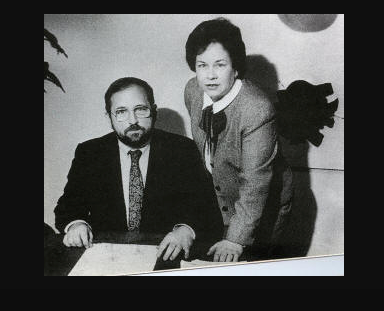
Bill Hamilton was employed by NSA for six years. He left the agency in 1966.
Bill's description of PROMIS,
PROMIS was designed to track the vast amount of criminal cases piling up in DOJ offices across the country. Bill Hamilton, in an interview for this story, recounted, “It was always a tracking program. It was designed to keep track of cases in local U.S. Attorneys’ offices, which means street crimes, keep track of the scheduled events in court, what actually takes place, who’s there, witnesses, police officers, conclusions, convictions, acquittals, whatever.”
- This stolen software was part of a major dispute in which Inslaw claimed the DOJ had stolen their software.
During the 12-year long legal proceedings, Inslaw accused the Department of Justice of conspiring to steal its software, attempting to drive it into Chapter 7 liquidation, using the stolen software for covert intelligence operations against foreign governments, and involvement in a murder. These accusations were eventually rejected by the special counsel and the Court of Federal Claims.
Did they have basis?
A little more history of PROMIS,
PROMIS was designed in the late 1970s and ‘80s to bring Department of Justice criminal case management from the dark ages into the light of the computer age. In the spring of 1981, the Reagan Administration hailed PROMIS as one of law enforcements greatest assets. By 1983, PROMIS had morphed into the behemoth of intelligence gathering. It was not state of the art – it was the art.
Over the ensuing decades PROMIS is reported to have been used by the DOJ, CIA, NSA, and several foreign intelligence agencies including Israel’s Mossad. The ownership of PROMIS has been the subject of federal court hearings and a congressional investigation.
The capabilities of PROMIS as a data collection and tracking program have never been a secret. But the only discussion of PROMIS has been about theft and black-market sales. Neither the courts nor Congress have ever inquired as to privacy issues or the ethics of the program. There has been no rending of political robes as seen with the Snowden case. In fact, the function of PROMIS has been discussed in open court and various public arenas.
As the LEAA dissolved in the late days of the Carter Administration, the Hamiltons formed Inslaw and began to make modifications to the public domain PROMIS. The short version: as originally designed, PROMIS ran only on 16-bit computers, using their own funds. INSLAW converted the program to run on 32-bit VAX computers which were massive for their time.
The Reagan administration was very taken with the Inslaw version of PROMIS. In March 1982 Inslaw was awarded $9.6 million to install the program in 20 U.S. Attorney’s offices, with further installations in the remaining 74 offices, if successful. This would be the last government contact the Hamiltons would receive, not because the system failed quite the contrary, it was too successful.
Hamilton explained,
“We developed it originally just for prosecutors.
But some of our users wanted to have it shared with the courts and the police.
So, the software was engineered to make it adaptable. In making it highly adaptable, a byproduct was to make it useable for non-prosecutor tracking and that made it adaptable totally outside the criminal justice system.”
It became obvious with the latest round of modifications any data system could be integrated into PROMIS.
And those data systems could interact that is, combine with each other forming a massive tracking data base of people via government documents such as birth and death certificates, licenses, mortgages, lawsuits or anything else kept in a data base.
PROMIS could also track banking transactions, arms shipments, communications, airplane parts again, anything kept in a data base.
Even more of the theft story,
With the discovery of these new capabilities Inslaw’s problems began. Unknowingly, the Hamiltons had embarked on an odyssey winding from the White House and the heart of the Reagan inner circle, bankruptcy court, a congressional investigation, secret informants, the CIA, NSA, and the Mossad.
The odyssey began in February 1983 when Dr. Ben Orr, an Israeli prosecutor, came to Hamilton’s office for a demonstration. He left, never placed an order and was never seen again. This was just one of the many demonstrations the company provided potential customers and the press. There was no shroud of secrecy about PROMIS or its capabilities.
Shortly after Dr. Orr’s visit, DOJ terminated payments to Inslaw, but refused to return the software. The company soon [June 1986] found its way into bankruptcy court. Inslaw put forth the claim that DOJ had stolen their software and made a concerted effort to drive them out of business. Bankruptcy Judge George Bason agreed.
In a 216-page opinion delivered in 1987, Judge Bason wrote that DOJ used “trickery, fraud and deceit” to steal PROMIS. He was later overruled by the DC District Court of Appeals on jurisdictional grounds. A previous district court supported his findings that PROMIS had been stolen. Bason became one of the very few Bankruptcy judges to not be re-appointed.
So in our reconstructed timeline Now Enter Prism which came from Promis.
During the 12-year long legal proceedings, Inslaw accused the Department of Justice of conspiring to steal its software, attempting to drive it into Chapter 7 liquidation, using the stolen software for covert intelligence operations against foreign governments, and involvement in a murder. These accusations were eventually rejected by the special counsel and the Court of Federal Claims.
This will be continued in a second connecting article.
Thank you to William Stone who shared this link with me on Facebook and it lays out the greatest spy story very well!
Excellent by Dan Bongino
https://www.facebook.com/dan.bongino/videos/580701175865365/
Update
Facebook Post
Assistant Attorney General John C. Demers Delivers Remarks on the National Security Cyber Investigation into North Korean Operatives
The indictment adds to the list of victims since 2018, including continued cyber-enabled heists from banks on four continents targeting over $1.2 billion.
DPRK (Democratic People’s Republic of Korea) cyber threat has followed the money and turned its revenue generation sights on the most cutting edge aspects of international finance, including through the theft of cryptocurrency from exchanges and other financial institutions, in some cases through the creation and deployment of cryptocurrency applications with hidden backdoors.
Remember where hidden backdoors came into play?
** an acronym for Prosecutors' Management Information System, for use in law enforcement record keeping and case-monitoring activities.
** The US intelligence community took the PROMIS software and added a hidden "backdoor" for monitoring banking transactions and money laundering.
** Systematics was the firm that the National Security Agency (NSA) used to get the PROMIS software with the hidden backdoor into the hands of banks worldwide.
Some software stolen from Inslaw (Institute for Law and Social Research) by the DOJ.
Then it was put into various programs to gain access to children's health through a program called Head Start.
If you're not familiar, this is a government program,
Head Start is a program of the United States Department of Health and Human Services that provides comprehensive early childhood education, health, nutrition, and parent involvement services to low-income children and their families.
So all of our files consisted of data collection as it was also used for pupil records and management systems.
An October 16 FOX News report by correspondent Carl Cameron indicating that convicted spy, former FBI Agent Robert Hanssen, had provided a highly secret computer software program called Promis to Russian organized crime figures - who in turn reportedly sold it to Osama bin Laden - may signal a potential intelligence disaster for the United States.
Bin Laden's reported possession of Promis software was clearly reported in a June 15, 2001 story by Washington Times reporter Jerry Seper. That story went unnoticed by the major media. In it Seper wrote, "The software delivered to the Russian handlers and later sent to bin Laden, according to sources, is believed to be an upgraded version of a program known as Promis - developed in the 1980s by a Washington firm, Inslaw, Inc., to give attorneys the ability to keep tabs on their caseloads. It would give bin Laden the ability to monitor U.S. efforts to track him down.
It also gives him access to databases on specific targets of his choosing and the ability to monitor electronic-banking transactions, easing money-laundering operations for himself or others, according to sources."
I had tracked evidence of Promis software being used for electrical system design and health.
For example. ..
PROMIS® (Patient-Reported Outcomes Measurement Information System) is a set of person-centered measures that evaluates and monitors physical, mental, and social health in adults and children. It can be used with the general population and with individuals living with chronic conditions.
Now back to AG John Demers and the Cyber Investigation into North Korean Operatives.
As will be described in more detail by my colleagues, the Department has obtained custody over a dual-U.S./Canadian national who organized the laundering of millions of dollars stolen by the DPRK hackers. He has admitted his role in these criminal schemes in a plea agreement, and he will be held to account for his conduct.
The Department was also able to seize and expects to ultimately return almost $2 million stolen by the DPRK hackers from a New York-based financial services company. This follows on similar seizure actions announced in March and August 2020, in which with the U.S. Attorney’s Office for the District of Columbia seized and froze approximately $8.5 million of cryptocurrency.
the FBI and the Department of Homeland Security’s Cybersecurity and Infrastructure Security Agency, with the assistance of the Department of the Treasury, are releasing a Joint Cybersecurity Advisory and Malware Analysis Report regarding the DPRK’s malicious cryptocurrency applications.
These conspirators described in today’s indictment are alleged to have been working, at times, from locations in China and Russia. The DPRK has also utilized Chinese over-the-counter cryptocurrency traders and other criminal networks to launder the funds.
The Department’s criminal charges are uniquely credible forms of attribution — we can prove these allegations beyond a reasonable doubt using only unclassified, admissible evidence. And they are the only way in which the Department speaks. If the choice here is between remaining silent while we at the Department watch nations engage in malicious, norms-violating cyber activity, or charges these cases, the choice is obvious — we will charge them.
See connecting articles to the Promis software history and case in comments of Original Post.
Access by clicking on the time stamp underneath my name.
https://www.facebook.com/melissa.mcgarity.14/posts/10223230764411932
Please let me know your thoughts on all of this. Stay safe Patriots and Guardians of Children! Godspeed!
Other Sources,
https://www2.ed.gov/about/offices/list/oig/invtreports/doj032006.html
https://consortiumnews.com/2013/07/11/prisms-controversial-forerunner/
https://www.theblackvault.com/documentarchive/nsa-surveillance-program-promis/#
http://www.abovetopsecret.com/forum/thread1089326/pg1
UPDATE
found 6.22.2021
The Promis Threat:
An Octopus Slouches Toward Mena, Arkansas,
Area 51 and The International UFO
Congress in Las Vegas
https://www.umsl.edu/~thomaskp/jpage.htm
https://www.unz.com/wwebb/isabel-maxwell-israels-back-door-into-silicon-valley/
works off of my Ghislaine Maxwell and siblings reports/articles
